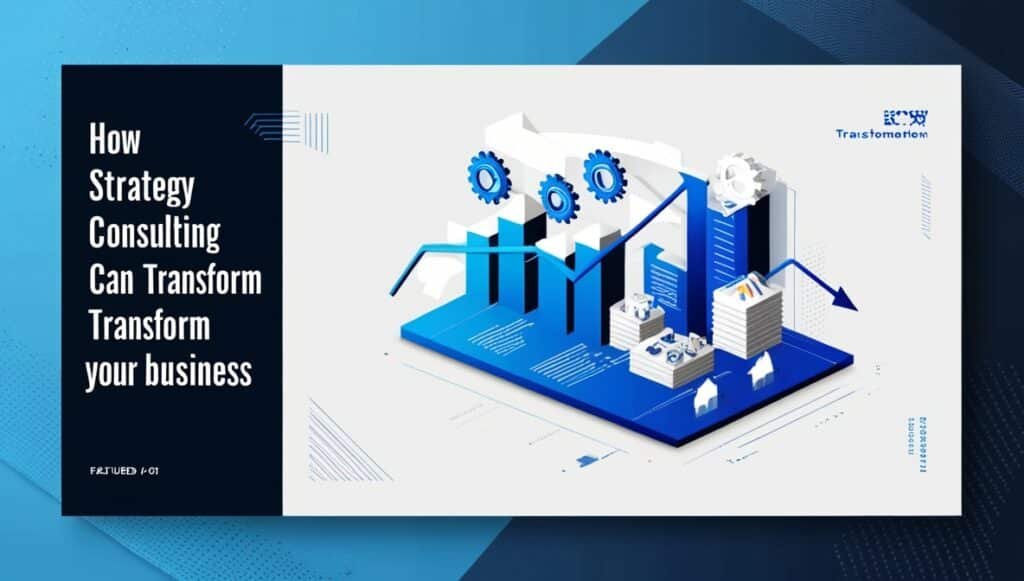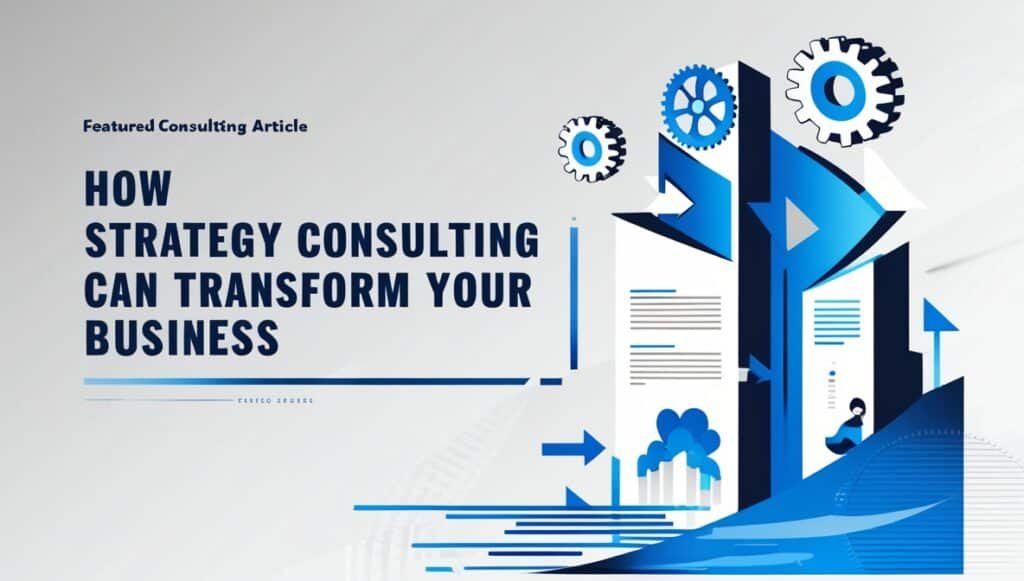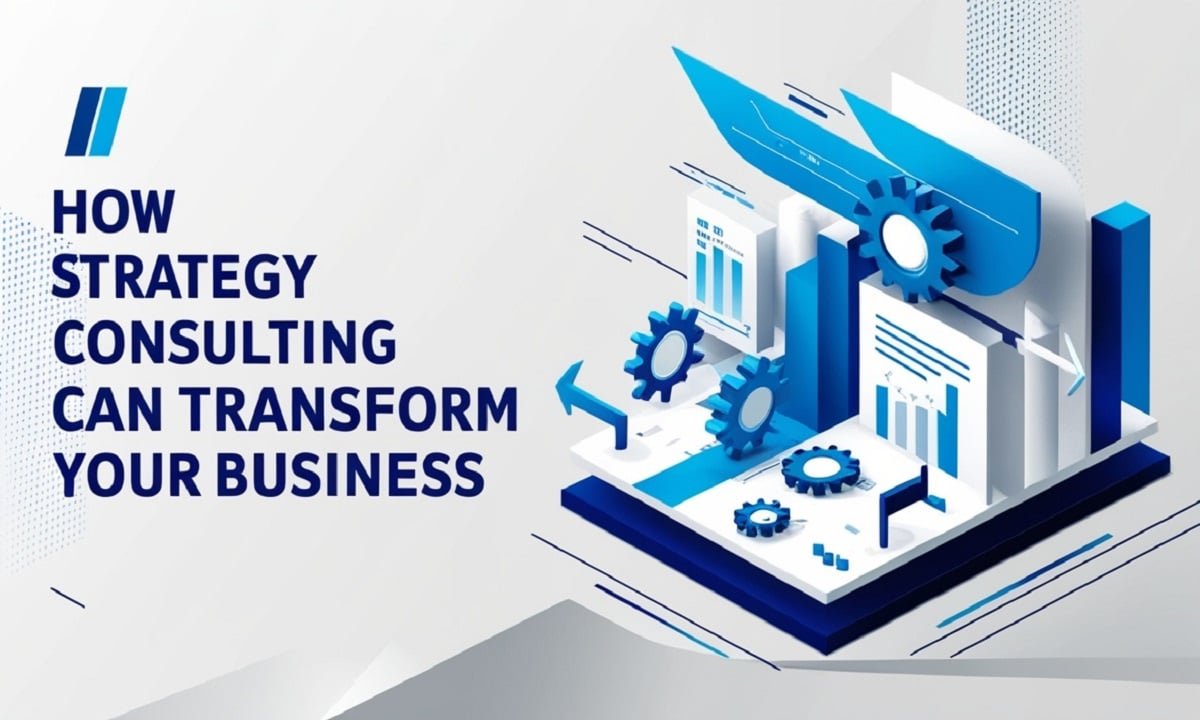Sarah Chen stared at her company’s quarterly report with growing dread. Revenue had flatlined for eight consecutive months. Her team worked harder than ever, yet results remained stagnant. Three weeks after hiring a strategy consulting firm, everything changed. They identified a pricing model flaw costing $2.3 million annually. The Global Strategy Consulting Market reached $101.75 billion by 2027 for good reason.
Businesses face unprecedented complexity in today’s marketplace. Strategic planning isn’t optional anymore—it’s survival. This guide reveals how strategy consulting transforms struggling businesses into market leaders. You’ll discover when to hire consultants, what they actually do, and how to maximize your investment. No fluff, just actionable intelligence from real-world transformations.
Decoding Strategy Consulting: More Than Advice
What Strategy Consulting Actually Delivers
Strategy consulting provides specialized expertise that reshapes business models from foundation to execution. Unlike generic advice, it delivers three concrete pillars: diagnosis, design, and execution support. Think of it as business surgery with a roadmap. Consultants dissect your operations, identify tumors, and prescribe treatment protocols. They don’t just hand you recommendations and disappear.

Business consultants differ fundamentally from management consultants or fractional executives. Management consulting tackles operational issues like workflow inefficiencies. Strategy consultants solve high-level business challenges that determine whether you thrive or die. The value proposition splits into tangible and intangible benefits. Tangible outcomes include revenue growth, cost reduction, and productivity improvement. Intangible benefits encompass organizational clarity, aligned vision, and competitive advantage positioning.
When Your Business Actually Needs It
Six trigger points signal it’s time for strategic planning intervention:
- Growth plateaus where standard tactics stop working
- Market entry attempts without clear positioning strategy
- Digital transformation initiatives overwhelming internal capabilities
- Pre-investment preparation requiring operational optimization
- Post-merger chaos demanding integration frameworks
- Competitive landscape shifts threatening market share
Startups typically need consulting during Series A scaling. Large corporations require it when entering unfamiliar markets. Mid-sized businesses benefit most during digital overhauls or succession planning.
The Real ROI: Quantifiable Business Transformations
Revenue Acceleration Mechanisms
Strategic recommendations directly impact top-line growth through multiple channels. Market research reveals untapped customer segments worth millions in annual recurring revenue. A manufacturing client discovered their pricing sat 23% below industry benchmarks. Adjusting prices based on competitive analysis added $4.7 million without acquiring new customers. That’s pure margin expansion.
Market entry plans crafted with analytical skills reduce failure rates by 67%. Instead of trial-and-error approaches costing hundreds of thousands, businesses enter markets with precision targeting.
Product launch strategies informed by data analysis achieve 3.2x higher adoption rates. Consultants identify positioning angles that internal teams miss due to proximity bias.
Operational Efficiency Breakthroughs
Workflow management redesign yields staggering returns on investment. One logistics company reduced processing time by 41% through process reengineering. Annual savings exceeded $1.8 million. Operational efficiency improvements often hide in plain sight. External consultants spot redundancies that employees accept as “how we’ve always done things.” Fresh eyes reveal absurdities.
Technology stack optimization represents another goldmine. A financial services firm consolidated seven software platforms into two. Their IT costs dropped 34% while performance improved.
Resource allocation corrections eliminate waste that drains profitability. Consultants map where effort goes versus where value gets created. The gaps shock most executives.
| Transformation Area | Average Impact | Timeframe |
|---|---|---|
| Pricing Optimization | 15-25% margin increase | 3-6 months |
| Process Redesign | 30-45% efficiency gain | 6-9 months |
| Market Entry | 67% failure reduction | 12-18 months |
| Digital Strategy | 2-3x ROI improvement | 9-15 months |
Risk Mitigation and Crisis Navigation
Change management expertise becomes critical during turbulent periods. When competitors launch disruptive offerings, consultants develop countermoves rooted in strategic foresight.
Financial analysis conducted during restructuring prevents bankruptcy scenarios. One retail chain facing insolvency implemented consultant recommendations. They returned to profitability within 14 months.
Market shift adaptation requires speed and precision. COVID-19 forced rapid pivots. Companies with consultant-guided strategies pivoted 5x faster than those improvising internally.
Long-Term Competitive Positioning
Sustainable competitive advantage doesn’t happen accidentally. It requires deliberate strategic development aligned with long-term business objectives.
Innovation opportunities identified through competitive analysis create moats around your business. Consultants spot white space competitors haven’t noticed yet.
Market leadership capture demands more than good products. It requires positioning strategy, messaging frameworks, and stakeholder communication protocols. Strategy consultants architect these systems holistically.
Inside the Strategy Consultant’s Playbook
Discovery and Diagnostic Phase
Business analysis begins with forensic investigation into performance drivers. Consultants examine financial statements, customer data, operational metrics, and competitive intelligence. Nothing escapes scrutiny.
Stakeholder interviews reveal hidden dysfunction that numbers can’t capture. A consultant once discovered two departments duplicating identical work. Neither knew about the other’s efforts.
Data analysis methodologies include ratio analysis, trend identification, variance investigation, and benchmark comparisons. These techniques expose truth beneath surface-level symptoms.
Competitive landscape mapping shows where you stand versus rivals. Most businesses operate blind to competitive positioning. Consultants provide 360-degree market visibility.
Strategic Framework Development
Custom frameworks beat templated approaches every single time. Your business faces unique challenges requiring tailored solutions. Cookie-cutter strategies fail spectacularly.
Scenario planning stress-tests strategies against multiple futures. What if interest rates spike? What if your largest customer leaves? Strategic planning accounts for volatility.
Option generation pushes beyond obvious solutions. Consultants present 4-6 strategic pathways, each with tradeoffs. Decision-making improves when you see all alternatives clearly.
Decision matrices quantify qualitative factors. Which strategy offers the best risk-adjusted return? Frameworks transform gut feelings into informed decision-making.
“The best strategy isn’t the perfect strategy. It’s the strategy you can execute with resources you actually have.” — Former McKinsey Partner
Implementation Architecture
Roadmaps bridge strategy and execution. Implementation guidance includes sequenced initiatives, resource requirements, milestone definitions, and contingency protocols.
Change management integration ensures strategies don’t die during rollout. Resistance kills more strategies than flawed concepts. Consultants design adoption frameworks addressing human dynamics.
Performance metrics track actual progress, not vanity metrics. Revenue per employee, customer acquisition cost, and lifetime value matter. Likes and impressions don’t.
Accountability structures assign ownership for each strategic initiative. Without clear responsibility, strategies languish. Workflow management systems enforce discipline.
Why External Expertise Outperforms Internal Strategy
The Objectivity Advantage
Fresh perspective cuts through internal politics poisoning strategic planning. Employees fear challenging sacred cows. Consultants don’t.
Pattern recognition across industries reveals solutions your team would never consider. A retail insight might solve a healthcare problem. Cross-pollination sparks breakthrough thinking.
Uncomfortable questions separate mediocre from excellent consulting. “Why do you believe that?” forces examination of assumptions. Most business models rest on outdated beliefs.
Specialized Knowledge Arsenal
Specialized expertise spans methodologies most companies can’t develop internally. Consultants invest millions in proprietary frameworks and tools.
Advisory services include access to databases tracking industry benchmarks, emerging technologies, and competitive advantage tactics. This intelligence costs hundreds of thousands to compile independently.
Technical depth in digital transformation, AI integration, and operational improvement exceeds what generalists possess. Strategy consultants live in these domains daily.
Bandwidth and Focus Reality
Executives can’t dedicate weeks to strategic development while running operations. Corporate strategy requires undivided attention that daily firefighting prevents.
The “strategy as side project” trap guarantees mediocre results. Strategic thinking demands cognitive space. Exhausted leaders produce compromised strategies.
Dedicated resources for critical thinking work deliver exponentially better outcomes. Three weeks of focused consultant time beats six months of scattered executive attention.
Selecting the Right Strategy Partner: What Actually Matters
Beyond Brand Names and Prestige
Industry-specific experience trumps general consulting firms reputation. A healthcare specialist beats a prestigious generalist for hospital challenges.
Team composition matters more than firm brand. Who actually performs the work? Junior associates or seasoned partners? Demand specifics.
Methodology transparency reveals consulting quality. Can they explain their approach coherently? Or do they hide behind jargon? Effective communication starts with clarity.
Red Flags and Green Lights
Warning signs of consultants to avoid:
- Refusing to provide client references
- Guaranteeing specific numerical outcomes
- Unwillingness to customize approaches
- Vague descriptions of deliverables
- Pressure tactics during sales process
Green lights signaling quality partners:
- Practical experience in your industry
- Transparent pricing and scope documentation
- Collaborative working style
- Strong analytical skills demonstrated in proposals
- Realistic timeline expectations
| Evaluation Criteria | Weight | What to Assess |
|---|---|---|
| Industry Experience | 30% | Years in sector, client portfolio |
| Methodology | 25% | Framework quality, customization |
| Team Composition | 20% | Actual workers, not just partners |
| Cultural Fit | 15% | Communication style, values alignment |
| Track Record | 10% | Verified outcomes, references |
Integration and Chemistry Factors
Cultural fit determines implementation success rates. Consultants must mesh with your team’s working style. Friction derails even brilliant strategies.
Communication skills matter enormously. Can consultants explain complex concepts simply? Will they overwhelm or illuminate?
Collaborative versus prescriptive approaches suit different situations. Rapid turnarounds need prescriptive guidance. Organizational transformation requires collaborative co-creation.
Maximizing Your Consulting Investment
Client-Side Success Factors
Data preparation accelerates consulting timelines dramatically. Organized financial records, customer databases, and operational metrics enable faster diagnosis.
Internal champion identification proves critical for adoption. Designate an executive sponsor with authority and passion. They bridge consultants and teams.
Stakeholder communication before consultants arrive sets proper expectations. Explain why you’re hiring consultants, what you hope to achieve, and how employees benefit.
Resource commitment requirements include executive time, employee interviews, and access to systems. Half-hearted participation produces half-baked strategies.
Co-Creation for Sustainable Results
Knowledge transfer mechanisms embed specialized expertise into your organization. Request workshops teaching frameworks consultants use. Build internal capability.
Innovation and sustainability require ongoing strategic thinking. Don’t become consultant-dependent. Develop muscles for future challenges.
Post-engagement sustainability planning answers “what happens after consultants leave?” Document processes, train teams, and establish review cadences.
Transformation Stories: Real Results from Real Companies
Manufacturing Turnaround
A $45 million manufacturer faced declining margins and aging infrastructure. Strategy consulting revealed their business model required complete overhaul.
Consultants implemented:
- Digital transformation modernizing production systems
- Cost reduction initiatives cutting overhead 28%
- Market entry strategy into adjacent verticals
- Operational efficiency protocols reducing waste
Results after 18 months: Revenue grew 34%, margins expanded 12 points, employee satisfaction increased 41%.
Technology Startup Scaling
A Series B SaaS company struggled scaling beyond $10 million ARR. Strategic planning identified product launch sequencing issues and positioning confusion.
The advisory services included:
- Competitive analysis revealing differentiation opportunities
- Pricing optimization increasing average contract value 67%
- Go-to-market strategy targeting enterprise accounts
- Organizational transformation preparing for rapid growth
Within 24 months, ARR reached $38 million with clear pathway to $100 million.
Retail Chain Revival
A regional retail chain with 47 locations faced e-commerce disruption. Business consultants developed digital strategy integrating physical and online experiences.

Implementation guidance covered:
- Omnichannel workflow management systems
- Customer experience redesign based on market research
- Financial analysis optimizing inventory allocation
- Change management retraining 800 employees
Same-store sales increased 23% year-over-year. Online revenue grew from 8% to 31% of total sales.
Conclusion: Your Strategic Inflection Point
Strategy consulting transforms businesses by combining objective view, specialized expertise, and implementation guidance. The Global Strategy Consulting Market exploded to $101.75 billion because it works. Strategic paralysis costs more than consulting fees. Every month without clear direction bleeds competitive position. Competitive advantage compounds or erodes—there’s no standing still.
Business success pathways require both vision and execution capability. Consultants provide frameworks that internal teams implement with newfound clarity. The companies thriving in global marketplace complexity share one trait: they invest in strategic foresight. They recognize that sustained growth demands external perspectives breaking through internal blindness.
Your strategic development journey begins with honest assessment. Are you achieving long-term business objectives? Does your team possess analytical skills for rigorous competitive analysis? Decision-making improves when you acknowledge capability gaps. Hiring strategy consultants isn’t weakness—it’s strategic wisdom. Even elite athletes employ coaches.

